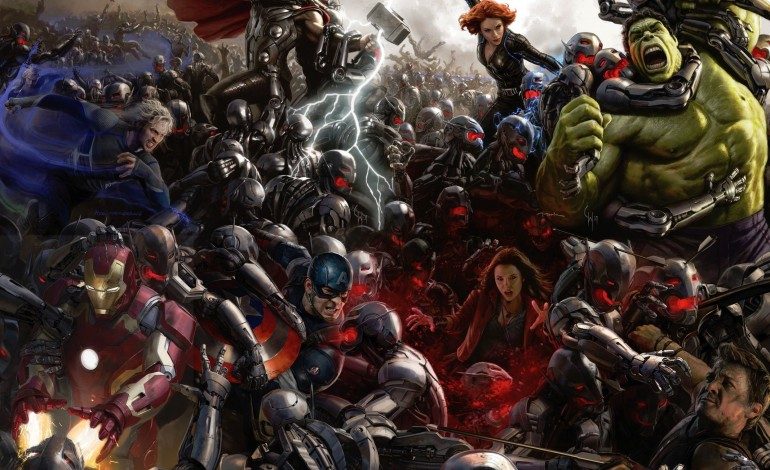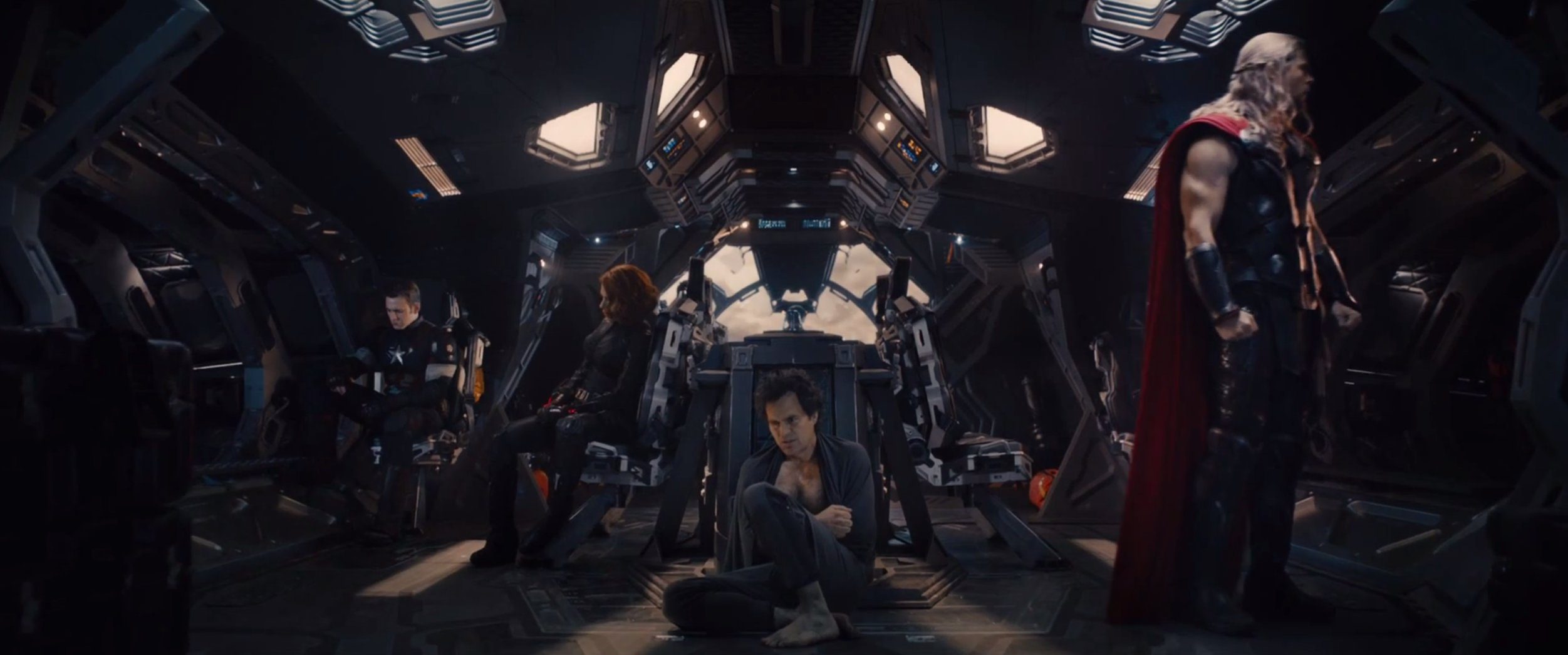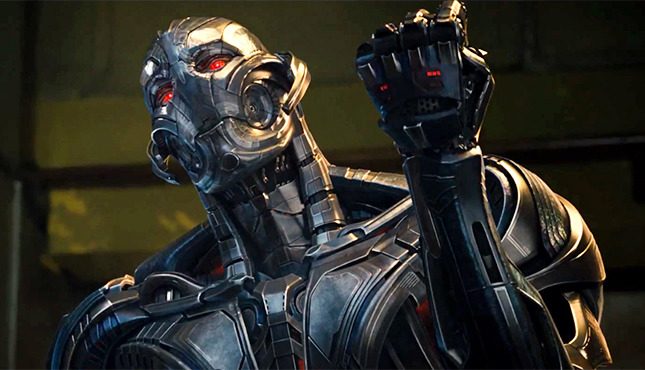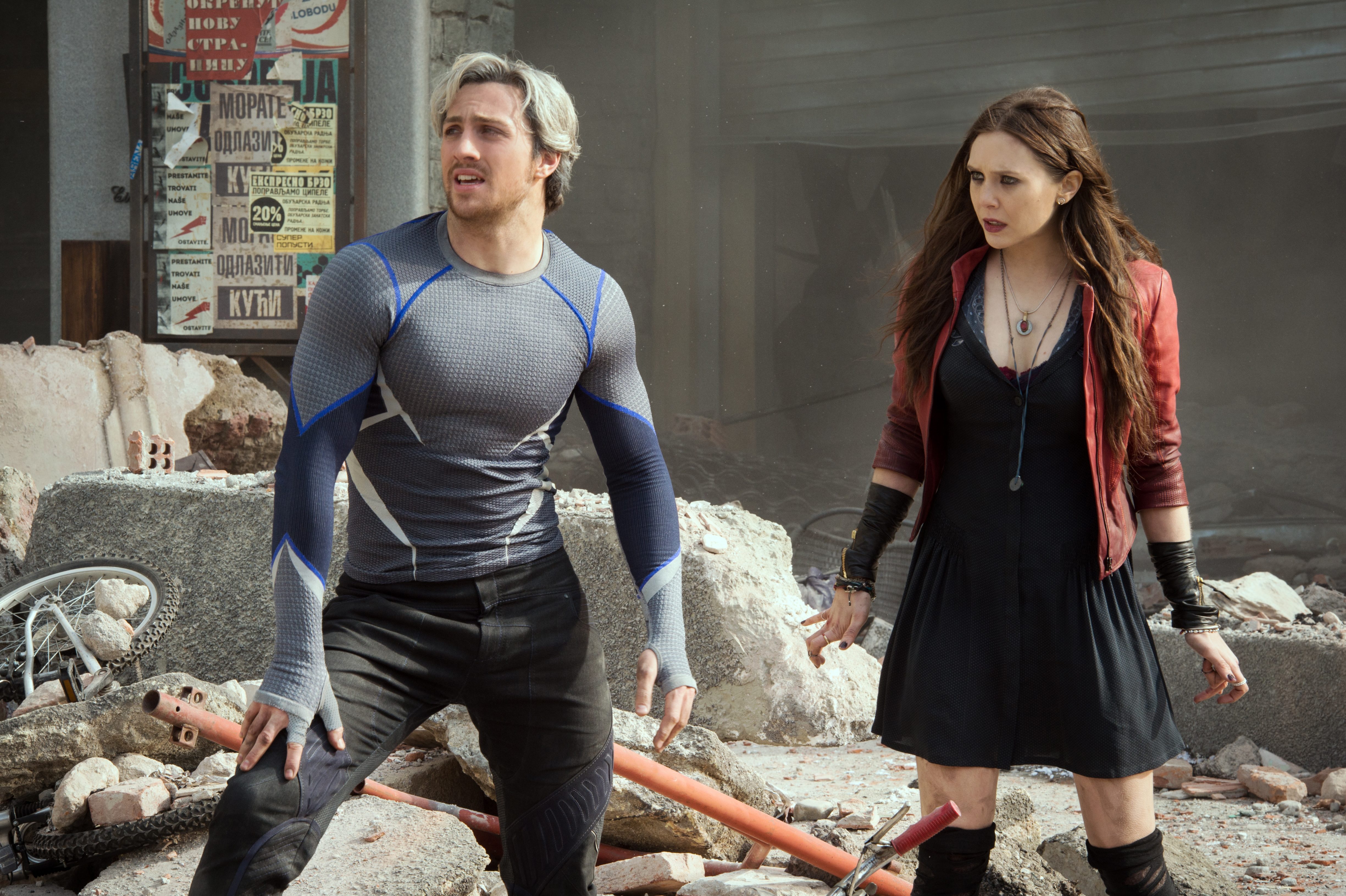

Welcome to Revisionist History, where we, unencumbered by the demands of studios and profit margins, try to imagine different and better versions of the movies that are out there. This is not a review; it is a full-spoiler exploration of what works, what doesn’t, and what might be done differently, particularly from a story/concept standpoint (i.e. unless there’s a particular tic that is distracting, it’s hard to account for a poor acting performance or other failure in execution alone other than to say, “Do better.” Which isn’t very interesting or helpful to anyone.).
This week, we’re revising Avengers: Age of Ultron.
As with pretty much every big budget blockbuster superhero movie, doing a revisionist history can be difficult because these movies have so many threads that can be followed to create…if not a better movie, than at least one that feels less bloated. Avengers: Age of Ultron is no different. Like every overstuffed blockbuster, it has too much and too little going on simultaneously. Von Strucker and Hydra were underbaked. Even Ultron felt underused and underexplored – I mean, the guy becomes the internet and the film did nothing with that. Did he affect anything in the real world or did he lie in wait for his floating island plan to come to fruition? At the same time, Hulkbuster vs. Hulk was overlong, ended up being totally unnecessary, and took attention away from Ultron, his plan, and the actual plot of the movie. In actuality, the entire Wakanda sequence did.
The Marvel movies, the Iron Man ones in particular, have always had a problem following through on their higher-level concepts once they hit the second act and devolve into action spectacles. Iron Man 2 alleged that it would talk about Tony Stark “privatizing world peace,” but it dropped that about the time Mickey Rourke attacked Tony on the race track. Similarly, Tony’s PTSD was all but forgotten by the mid-point of Iron Man 3. The Avengers: Age of Ultron also had a premise that was ripe for insight – what are the Avengers, Earth’s mightiest heroes, afraid of? The film even had a catalyst to explore this angle: Scarlet Witch, who was able to paralyze all of the heroes by trapping them with their inner demons. Moreover, these sequences were some of the most intellectually, aesthetically, and emotionally interesting parts of the movie.
At the end of the sequence, Tony still gets his waking nightmare, the Avengers recover Loki’s Scepter, Von Strucker gets away, we’re introduced to Project Ultron, and we have the Stark House Party – notably the second Stark House Party that involves robots attacking people. This sequence is just a distraction so that Ultron can recover the Scepter for the mind gem, which – how did he know about the mind gem? But I digress.
At this point, our revision begins to diverge by having Ultron team up with Hydra/Von Strucker to create something of a weightier storyline for the bad guys. The obvious point of this is so that Ultron can lure Scarlet Witch and Quicksilver to his side and eventually betray Von Strucker. But it gives us more Ultron, more insight into his character, and a better sense of what the Avengers are facing.
Meanwhile, at the Hall of (A)vengeance, the Avengers are fighting one another because of Tony’s penchant for turning into a dictator. They get a call of some attack somewhere. Avengers assemble. But it’s just a trap set by Von Strucker and Ultron to get them isolated so that Scarlet Witch can work her magic. Maybe even have a scene where Ultron commandeers Tony’s Iron Man suit leaving him completely ineffective – again, Ultron’s in the internet, I’m sure the suit is connected to Wi-Fi – which would play on Tony’s fear of being unable to stop the horrors that are about to occur – horrors literally of his own design.
These Scarlet Witch-induced nightmares become the centerpiece of the movie. In the current film, Tony’s was not just the most lengthy and complete of all of them, but also the one that felt most like a genuine look into his greatest fears. We immediately believed in the power of the vision to haunt Tony well after it was over. By contrast, everyone else’s seemed like quick clips of what were more interesting segments. I would have liked to get a better sense of why Black Widow’s “ledger is dripping, gushing red,” as Loki says in the first Avengers, other than witnessing the briefest glimpses of her training. What about Thor worrying if his absence has put Asgard into ruin, thus indicating a subconscious worry that Odin might not be as he seems (see the end of Thor: The Dark World), and that Thor was himself the cause of it. (Which he kind of was?) Canonically, the Hulk’s biggest fear is puny Banner, so getting that point across would have given Mark Ruffalo more to do than flirt with Black Widow while also filling in some of Banner’s backstory. And what is Captain America’s biggest fear? Based on the dream sequence, would it be finding himself hopelessly alone? That seems kind of lame and generic. Especially since his greatest fear would be the same as Tony’s – being unable to save everyone.
Now, I’m not saying the movie should have had each character is trapped alone in their own head for the majority of the running time, but I think more time spent on journeys into the subconscious could have added more insight into these characters. The Avengers must constantly put on a public face as the most alpha of alpha males (the point of the party scene), so seeing them alone and at their most vulnerable would be a telling change. Plus, if there’s anything that gives free reign to use the most ridiculous effects and comic book-y action, it’s dream sequences.
But here’s why the dream sequences really matter. A character arc is all about adapting after being made aware of weaknesses. After coming out of their trances, the Avengers would have to own up to and face their own fears, enemies which don’t go away when you punch them. Imagine what might be when the most powerful beings on Earth are forced to contend with their greatest weaknesses – themselves. It would require them to question what they do, how they do it, and with whom they ally. Even better, this is an idea that’s already festering due to the destruction of S.H.I.E.L.D. and the creation of Ultron through Stark’s hubris. (And for what it’s worth, that’s not something they’re asked to do in Age of Ultron. The best we get are hints at future Marvel films where they might have to deal with the consequences of their own shortcomings.)
They can still recuperate at the Old Barton Homestead because it would give Hawkeye more to do and further establish him as the one with the most personal stakes when he goes into battle. But this time, it should be more effectively cut with scenes of Ultron and Strucker (who may or may not be dead by this point, it doesn’t really matter), as well as scenes in the real world if Ultron is screwing with people through the internet. As the team tries to deal with their own damage, Ultron is working through his plans – both to evolve himself and to destroy humanity (which he can fully acknowledge is a hacky trope, but completely logical. I mean, he wanted launch codes. Is this 1985? Why don’t they just unplug the god damn thing?). I’d also establish a better timeline of just how long they were on the farm versus how long Ultron was in action. Even with an army of robots, I’m sure it takes some time to create a floating country.
Scarlet Witch and Quicksilver realize they are aiding in their own executions, so Scarlet Witch mind-whammies Ultron (she mentions late in the movie that she can get a sense of his mind, plus it shows the simultaneous benefit and pitfall of evolution) and she and Quicksilver take the mind gem off to the Avengers.
Realizing they’re not going to get anything accomplished sitting on a farm all the live long day, Tony and Banner (and Thor, for protection) return to Avengers Tower to work on whatever project ends up becoming Vision (who looked incredible). The entire house is off-line and everything they’re using is antiquated. Tony decides to use an earlier version of JARVIS as a base AI when Quicksilver and Scarlet Witch show up with the mind gem. This allows Thor to actually describe what the Infinity Gems are, because they’re referenced but never really explained.
At the farm, Steve learns that Tony left and knows that he’s going home to initiate another crazy scheme. He and the remaining members of the team suit up to confront Tony when Vision comes to life. The Vision origin moment (plus his grabbing of Mjolnir) takes place similarly to what happens in the actual movie, but Steve is still done with The Avengers. Nick Fury steps out of the shadows and gives his pep talk. Steve is on the fence when Ultron plunges the world into darkness. Suit up, Avengers assemble, and we’re into the climax.
When changing the climax, the first thing I’d ask is… wasn’t the one in Avengers 2 pretty much the exact same ending as Avengers 1? Our heroes, all in a very concentrated area, button-mashing through an infinite army of faceless, nameless, disposal villains as a ticking clock of mass destruction threatens the Earth. Tony shares some pithy dialogue with the main bad guy, who is eventually defeated when everyone decides to work together. Everyone then drives off to points unknown.
Minor changes could have helped differentiate Age of Ultron from the earlier film and produce a more interesting climax. Something as simple as forcing the Avengers to split up to various places across the globe to fight Ultron’s armies, thus reducing their effectiveness, could have given this fight its own personality. And let’s have less with the rescuing of civilians (can we get over the Battle of Metropolis in Man of Steel already? What do you think happens when city blocks are destroyed?). Maybe have some representation of the character’s fears that they could overcome – yes it’s hacky, but it’s more than punch smash punch smash. And no floating countries – if you have to destroy something, make it world capitals…commerce centers…something we can legitimately feel might be obliterated, as opposed to the entire Earth itself, which we know won’t.
Yet for this version, I’d still keep what I considered the most interesting part of the real movie – when Vision and Ultron have their last (and first?) conversation, because that’s actually what the entire movie revolved around. Everything in the movie was triggered by Tony wondering about his legacy and wanting to build a shield around the Earth. The Vision and Ultron are Tony Stark’s angel- and devil-child, respectively. They represent his (and thus the Avengers’) greatest hope and greatest fear, the thin line between protection and destruction. They are brothers (I guess we can make a Thor and Loki parallel here) who have the same goal but different beliefs on how it’s best accomplished. Unlimited power and knowledge used for good and for ill, but both coming from the same neutral origin. Which of those is the path Tony Stark started them down? That’s the point.
So the bad guy’s destroyed, the world’s saved, the most expendable character is offed, and we’re through with the forshadowning of Hawkeye’s death so ridiculously blatant that it would have been surprising if he were killed. (The last mission before retirement plus the baby on the way? Did he say, “I’m getting too old for this shit,” to hit the trifecta? What about coughing blood into a napkin?) What happens now?
Well, how about an ending that actually matters? Yes, Avengers 2 gave Easter Eggs for most of the movies in Phase III, but it really could have benefited from a more powerful conclusion. (And no, not some credits sequence implying that Ultron lives on in some code somewhere.) We know Civil War is coming, so ending the movie with Tony and Steve on the outs would make a lot more sense than them having an apparent camaraderie. Yes, they joined together for the greater good to defeat Ultron, but that doesn’t put salve on all wounds. There’s clearly conflict between them; they should part ways with at the very least, an obvious uneasy tension. This way, when Steve greets the New Avengers, that moment should be bittersweet – equal parts proud because the brand is expanding and there are more super-humans to help in their quest and sad because he knows the original team is on its last legs.




